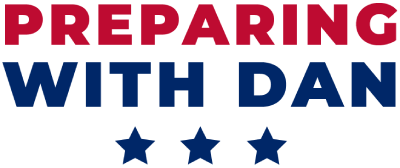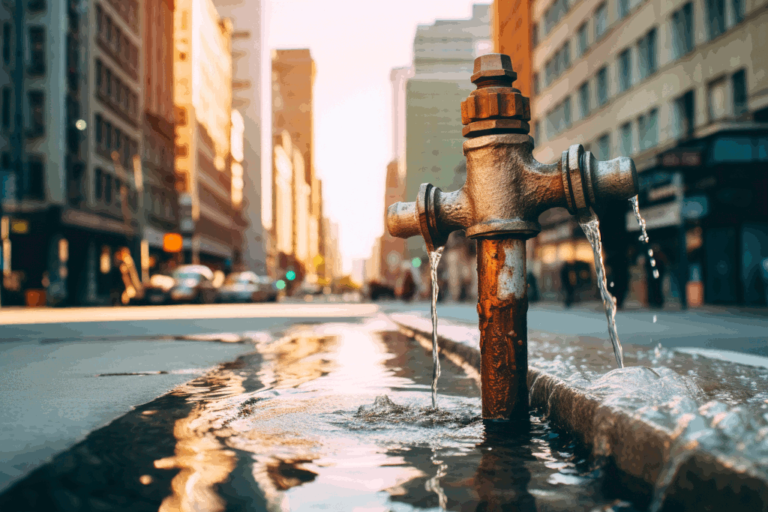Urban Water Scouting: A Comprehensive Guide to Finding, Filtering, and Surviving
In normal times, talking about finding water in the city is a no deal, but with over half the world’s population now living in cities, one of the most essential needs in any emergency situation is water. Whether it’s a natural disaster, a power outage, or a water contamination issue, having access to clean and safe water is crucial for survival. In this post, we’ll take a look at urban water scouting and how you can find, filter, and survive with water in an emergency situation. We’ll provide tips and tricks for finding water sources in urban areas, as well as how to filter and purify water to make it safe to drink.
1. Introduction to urban water scouting and its importance in survival situations
In survival situations, access to clean and safe water is paramount. As a general rule, understanding the basics of water scouting can be a lifesaver. Urban water scouting, in particular, refers to the process of locating and obtaining water sources within urban areas.
Water is essential for hydration, cooking, and sanitation. Without it, the human body quickly deteriorates, leading to dehydration, weakness, and even death. In urban environments, the search for water becomes even more challenging as natural sources like rivers and lakes are scarce or contaminated.
In emergencies, public water supply systems may become compromised or inaccessible. This is where urban water scouting skills become crucial. By having the knowledge to find, filter, and purify water in an urban setting, you can basicaly ensure your survival.
Even in the concrete jungle, water sources can be found if you know where to look. From rainwater collection to tapping into commercial buildings’ plumbing systems, there are various techniques and resources available to urban water scouts.
However, understanding the importance of proper filtration and purification methods is crucial. Urban water sources often carry contaminants and pollutants, making them unsafe for consumption without treatment. Learning about effective filtration systems and purification techniques will ensure that the water you obtain is free from harmful bacteria, viruses, and chemicals.
In this comprehensive guide, we will delve into the world of urban water scouting, equipping you with the knowledge and skills necessary to find, filter, and survive with water in urban areas.
2. Understanding the risks and challenges of urban water sources
Before embarking on any urban water scouting adventure, it is crucial to have a deep understanding of the potential risks and challenges that come with relying on urban water sources. While cities offer convenience and accessibility, the quality and safety of their water sources can vary greatly.
One of the primary risks is contamination. Urban areas are often plagued with pollution, industrial waste, and chemical runoff, which can find their way into water sources. This contamination can pose serious health risks if consumed without proper filtration or treatment. Additionally, urban water sources can be susceptible to bacterial and viral pathogens, making them potentially unsafe for direct consumption.
Another challenge to consider is the scarcity of water in urban environments. With population growth and increasing demands, water scarcity is becoming a pressing issue in many cities. This scarcity can lead to limited access to clean water sources, further complicating the task of finding safe and reliable water.
Furthermore, urban water sources may not always be easily accessible. Some sources may be privately owned or restricted, making it difficult to obtain water in emergency situations. It is important to be aware of any legal and ethical considerations when scouting for water in urban areas.
Lastly, unpredictable weather patterns and natural disasters can disrupt urban water infrastructure, leading to water shortages or contamination. In times of crisis, such as during a hurricane or earthquake, the availability of safe water becomes even more critical.
Understanding these risks and challenges is vital for successful urban water scouting. It will help you plan and prepare accordingly, ensuring that you have the necessary tools and knowledge to locate, filter, and survive with clean water in urban environments.
3. Identifying safe and reliable water sources in urban environments
One of the first places to look for water in urban areas is public parks. Many parks have fountains or water features that provide clean drinking water. These sources are usually well-maintained and regularly tested for quality.
Another option is to locate public buildings such as schools, libraries, or community centers. These facilities often have accessible water fountains or hydration stations. While the water may not be as pristine as bottled water, it is generally safe to drink and can fulfill your hydration needs in an emergency.
Additionally, consider exploring commercial areas like shopping malls, restaurants, or cafes. These establishments typically have restrooms equipped with sinks, which can serve as a potential water source. Remember to bring your own water container for collecting water, as using other options may not be hygienic.
In the event that clean water sources are scarce, it is important to be resourceful. Rainwater harvesting can be an effective method to obtain water in urban environments. Utilize any available containers, such as buckets or barrels, to collect rainwater during rainfall. Ensure that the containers are clean and properly covered to prevent contamination.
While it is essential to identify safe water sources, it is equally important to filter and purify the water before consumption. Invest in a reliable water filtration system or carry portable water filters that remove harmful bacteria, parasites, and chemicals. This ensures that the water you obtain, regardless of its source, is safe to drink and free from potential contaminants. We’ll go deeper into this topic in the next section.
Remember, in urban environments, water sources might be limited, so it is wise to plan ahead (check our Ultimate Emergency Checklist as well as our guide to Family Emergency Plan) and carry a sufficient supply of water with you whenever possible. However, in emergency situations or prolonged periods without access to clean water, utilizing these strategies for identifying, filtering, and purifying water can significantly increase your chances of survival.
4. Techniques for filtering and purifying urban water
Filtration is one of the most effective methods for purifying water, especially when dealing with contaminants like bacteria, parasites, and heavy metals.
Portable filters
Portable water filters are a popular choice for urban survival due to their convenience and effectiveness. Having a portable filter is easy to carry and convenient to use wherever the water source is. They work by physically straining out contaminants while allowing clean water to pass through. There are various types of portable water filters, including straw filters, pump filters, and bottle filters, each with their own advantages and suited to different situations. On of the most convenient are water bottles with a built-in filter. These bottles are reliable and allow you to fill up from any water source and have the water filtered as you drink, ensuring you have access to clean water wherever you go.
Best pick : Go Berkey Water Filter Kit
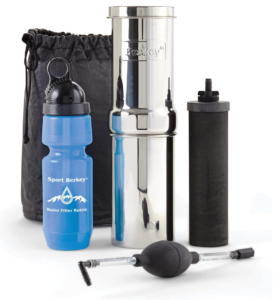
Steady filters
The other option, you guessed it, are non portable water filters. These are larger systems that can be highly effective in an urban survival scenario. A prime example of this is the Berkey water filter system. Berkey filters are gravity-fed and can purify water from a variety of sources, removing bacteria, viruses, chemicals, and heavy metals. They are an excellent option for a home base or shelter, providing a steady supply of clean water for drinking and cooking.
Best pick: Imperial Berkey Gravity-Fed Stainless Steel 4.5 Gallon
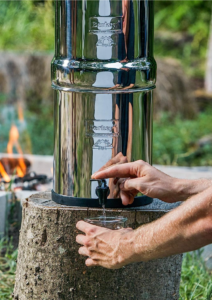
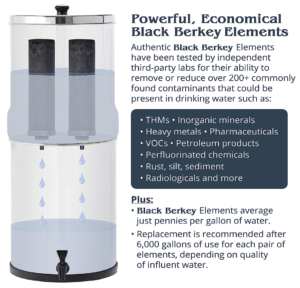
Purfication
An alternative effective method is the use of water purification tablets or drops. These tablets typically contain chemicals such as chlorine or iodine, which kill bacteria and viruses present in the water. Simply follow the instructions provided with the tablets or drops to properly purify the water.
Best pick: Aquatabs 397mg Water Purification Tablets (100 Pack)
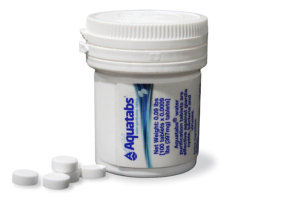
Boiling water is another tried and true technique for purifying urban water. By bringing the water to a rolling boil for at least one minute, you can effectively kill most types of pathogens. However, it’s important to note that boiling will not remove chemical pollutants, so this method should be combined with other filtration techniques if the water is suspected to be contaminated with chemicals.
Evaporation
Finally it’s worth mentioning the technique using a solar still. This method involves using the sun’s heat to evaporate water and then condense it into a clean container. While this method is more commonly used in wilderness survival scenarios, it can also be adapted for urban environments, particularly in situations where power is unavailable.
Remember, in urban environments, water sources can be unpredictable and potentially hazardous. It’s crucial to always prioritize your safety by using proper filtration and purification techniques to ensure the water you consume is clean and safe for your well-being. Aslo, no single method is foolproof, and the best approach often involves combining different purification methods.
5. Essential tools and equipment for urban water scouting
When it comes to urban water scouting, having the right tools and equipment is crucial for ensuring your safety and success. Whether you’re exploring a bustling city or venturing into a deserted area, being prepared can make all the difference. Here are some essential tools and equipment you should consider including in your urban water scouting kit:
Water Filter:
No surprise, as we already talked about this, a reliable water filter is a must-have item in your urban water scouting kit. It allows you to purify water from various sources, ensuring it’s safe for consumption. Look for a portable and lightweight filter that can remove bacteria, protozoa, and other contaminants.
Water Bottles:
Carry multiple water bottles with you to store and transport water. Opt for durable, BPA-free bottles that are easy to refill on the go. Consider collapsible water bottles to save space in your backpack.
Popular pick: Vapur Solid Flexible Water Bottle – with Carabiner
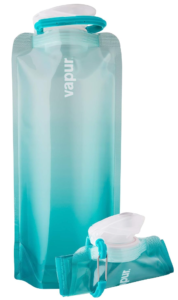

Map and Compass:
Navigating unfamiliar urban areas can be challenging, especially when searching for water sources. Of course, nowadays, we have all we need on our mobile, yet we’re talking here about potential disaster situations, so you may have issues to charge your phone, netwroks may be cut, whatever is the situation, an ‘old days’ map and compass will help you stay on track and find your way. Familiarize yourself with map reading and basic navigation skills before setting out.
Best pick: Professional Field Compass for Map Reading
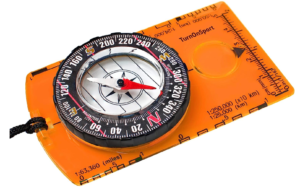
Portable Water Test Kit:
Testing the quality of water sources is essential to ensure their safety. A portable water test kit allows you to assess parameters like pH levels, chlorine content, and the presence of harmful bacteria. This information can guide your decision on whether to treat or avoid a water source. However, you need to familiarize with these parameters beforehand, understand risks and limits to be able to use the test kit to your advantage.
Best pick: 17 in 1 Premium Drinking Water Test Kit – 100 Strips + 2 Bacteria Tests
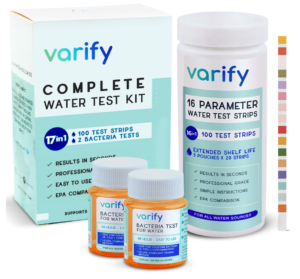
Lightweight Cooking Gear:
In case you need to boil water for purification or prepare meals, lightweight cooking gear is essential. Look for compact stoves, mess kits, and utensils that are easy to carry and don’t take up much space in your backpack. This is defintely one the ‘Must have’ versatile tools to secure on your Survivial checklist.
Waterproof Bags or Containers:
You’re looking for water and you don’t know what you might come with, so it’s not a bad idea to protect your equipment, electronics, and sensitive items from water damage by using waterproof bags or containers. These will keep your essentials dry and secure, even in wet conditions. In addition, it can protect your hardly found water from contamination.
First Aid Kit:
When it’s a matter of life or death, you may need to take risks to reach your objective, accidents happen, and being prepared with a well-stocked first aid kit is essential. Include items like bandages, antiseptic wipes, pain relievers, and any necessary medication in your kit.
Remember, the specific tools and equipment you need may vary depending on the environment you’ll be scouting in. Always assess the risks and challenges of the urban area you’re exploring and pack accordingly. Prioritize lightweight and compact items that won’t weigh you down but will still provide you with the necessary tools to find, filter, and survive urban water sources.
6. Safety precautions and considerations when sourcing and filtering urban water
When it comes to sourcing and filtering water in urban environments, safety should always be your top priority. While cities may offer seemingly abundant water sources, it’s crucial to be aware of potential contaminants and take necessary precautions to ensure the water you consume is safe.
First and foremost, never assume that tap water in urban areas is automatically safe to drink. While many cities have robust water treatment systems in place, there is still a risk of contaminants entering the water supply. It’s advisable to use a reliable water filter or purifier to remove any potential impurities, such as bacteria, viruses, heavy metals, or chemicals.
Before collecting water from any urban source, consider the environment it is coming from. Avoid areas near industrial sites, sewage outlets, or any potentially polluted water bodies. These areas could pose a higher risk of contamination, making the water unsafe for consumption even after filtration.
When sourcing water from natural sources like rivers, lakes, or streams in urban areas, be mindful of any signs or warnings indicating pollution or unsafe conditions. It’s always a good idea to check with local authorities when preparing, and before anything happens, sources surrouding you. In all cases, I recommend using water testing kits to assess the water’s quality before filtering and consuming it.
Additionally, remember to handle water collection equipment, containers, and filters with clean hands to avoid introducing any harmful bacteria or contaminants. Regularly clean and maintain your filtration system to ensure it functions effectively.
If you’re unsure about the safety of a water source or have any doubts, it’s best to err on the side of caution and find an alternative source. Your health and well-being should always take precedence when it comes to sourcing and filtering urban water.
7. Tips for optimizing water use in urban survival situations
It’s not just abouting finding and filtering water, source may be far or not easily accessible for you or your family, it may not be sustainable as well, so it is critical for you to be able to use it effectively to meet you basic needs. Here are some (quite basic I admit) tips that can help:
Prioritize essential water usage:
Identify the most crucial uses of water, such as drinking, cooking, and personal hygiene. Focus on these areas and try to reduce water consumption in non-essential activities.
Collect and reuse water:
Make use of every drop of water by collecting and reusing it whenever possible. For instance, collect rainwater using buckets or containers placed strategically on rooftops or balconies. You can utilize this collected water for non-potable purposes like cleaning or flushing toilets.
Practice water-saving techniques:
Adopt water-saving habits, such as turning off the tap while brushing your teeth, taking shorter showers, and using a basin to wash dishes instead of continuously running water. These small changes can add up and help conserve a significant amount of water.
Store water properly:
It is crucial to store water in suitable containers to prevent contamination and ensure its long-term usability. Use food-grade containers, such as large plastic jugs or barrels, and seal them tightly to maintain the water’s quality. Store these containers in a cool, dark place away from direct sunlight to prevent bacterial growth.
Prioritize water storage:
Well, last tip, which actually should be the first word of the post. Before an emergency occurs, it is wise to stock up on water supplies. Indeed, we should start from here. Store enough water to sustain each individual in your household for at least three days. It may seem a lot but believe me it’s just the minimum. The general guideline is to have one gallon of water per person per day, taking into account drinking, cooking, and sanitation needs.
Stay safe and hydrated, adventurers!
